Karim Benharrak
CS-FLEURS: A Massively Multilingual and Code-Switched Speech Dataset
Sep 17, 2025Abstract:We present CS-FLEURS, a new dataset for developing and evaluating code-switched speech recognition and translation systems beyond high-resourced languages. CS-FLEURS consists of 4 test sets which cover in total 113 unique code-switched language pairs across 52 languages: 1) a 14 X-English language pair set with real voices reading synthetically generated code-switched sentences, 2) a 16 X-English language pair set with generative text-to-speech 3) a 60 {Arabic, Mandarin, Hindi, Spanish}-X language pair set with the generative text-to-speech, and 4) a 45 X-English lower-resourced language pair test set with concatenative text-to-speech. Besides the four test sets, CS-FLEURS also provides a training set with 128 hours of generative text-to-speech data across 16 X-English language pairs. Our hope is that CS-FLEURS helps to broaden the scope of future code-switched speech research. Dataset link: https://huggingface.co/datasets/byan/cs-fleurs.
Lotus: Creating Short Videos From Long Videos With Abstractive and Extractive Summarization
Feb 10, 2025Abstract:Short-form videos are popular on platforms like TikTok and Instagram as they quickly capture viewers' attention. Many creators repurpose their long-form videos to produce short-form videos, but creators report that planning, extracting, and arranging clips from long-form videos is challenging. Currently, creators make extractive short-form videos composed of existing long-form video clips or abstractive short-form videos by adding newly recorded narration to visuals. While extractive videos maintain the original connection between audio and visuals, abstractive videos offer flexibility in selecting content to be included in a shorter time. We present Lotus, a system that combines both approaches to balance preserving the original content with flexibility over the content. Lotus first creates an abstractive short-form video by generating both a short-form script and its corresponding speech, then matching long-form video clips to the generated narration. Creators can then add extractive clips with an automated method or Lotus's editing interface. Lotus's interface can be used to further refine the short-form video. We compare short-form videos generated by Lotus with those using an extractive baseline method. In our user study, we compare creating short-form videos using Lotus to participants' existing practice.
Deceptive Patterns of Intelligent and Interactive Writing Assistants
Apr 14, 2024Abstract:Large Language Models have become an integral part of new intelligent and interactive writing assistants. Many are offered commercially with a chatbot-like UI, such as ChatGPT, and provide little information about their inner workings. This makes this new type of widespread system a potential target for deceptive design patterns. For example, such assistants might exploit hidden costs by providing guidance up until a certain point before asking for a fee to see the rest. As another example, they might sneak unwanted content/edits into longer generated or revised text pieces (e.g. to influence the expressed opinion). With these and other examples, we conceptually transfer several deceptive patterns from the literature to the new context of AI writing assistants. Our goal is to raise awareness and encourage future research into how the UI and interaction design of such systems can impact people and their writing.
Writer-Defined AI Personas for On-Demand Feedback Generation
Sep 19, 2023
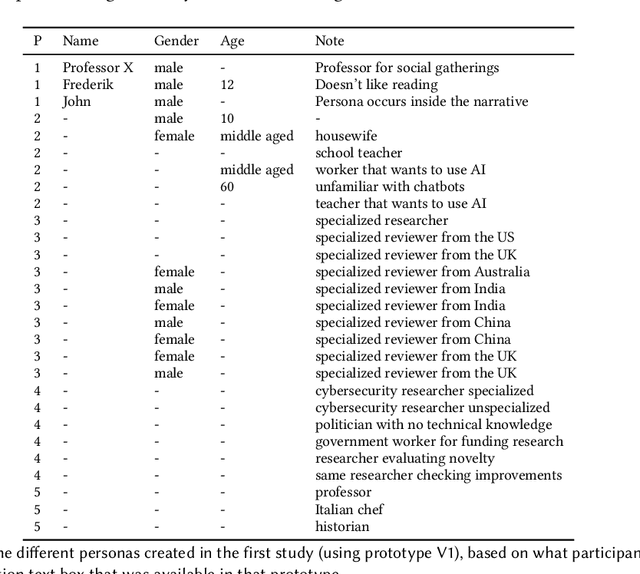
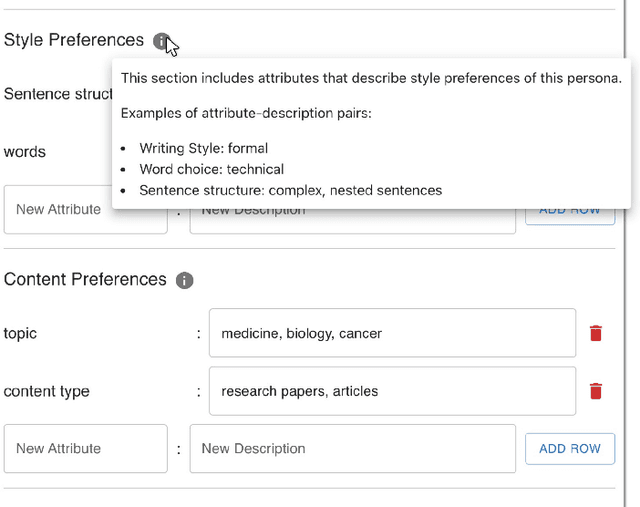
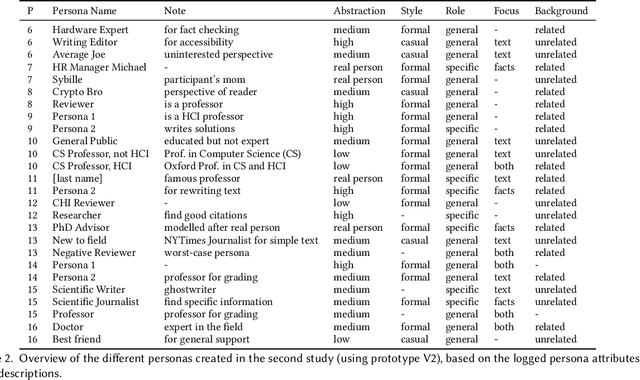
Abstract:Compelling writing is tailored to its audience. This is challenging, as writers may struggle to empathize with readers, get feedback in time, or gain access to the target group. We propose a concept that generates on-demand feedback, based on writer-defined AI personas of any target audience. We explore this concept with a prototype (using GPT-3.5) in two user studies (N=5 and N=11): Writers appreciated the concept and strategically used personas for getting different perspectives. The feedback was seen as helpful and inspired revisions of text and personas, although it was often verbose and unspecific. We discuss the impact of on-demand feedback, the limited representativity of contemporary AI systems, and further ideas for defining AI personas. This work contributes to the vision of supporting writers with AI by expanding the socio-technical perspective in AI tool design: To empower creators, we also need to keep in mind their relationship to an audience.
Beyond Text Generation: Supporting Writers with Continuous Automatic Text Summaries
Aug 19, 2022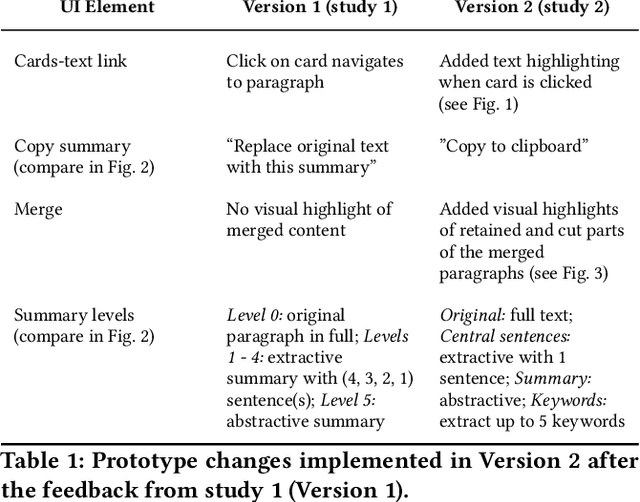
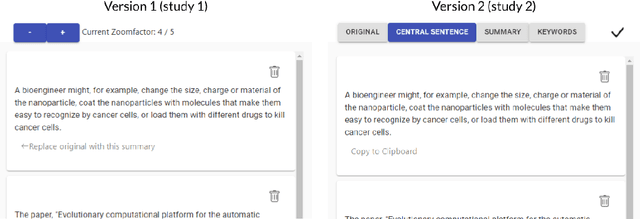
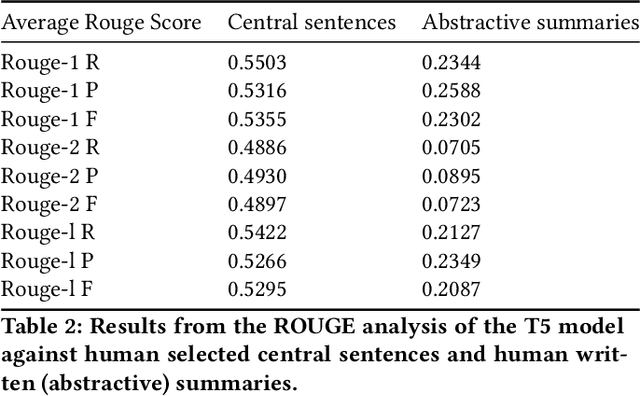
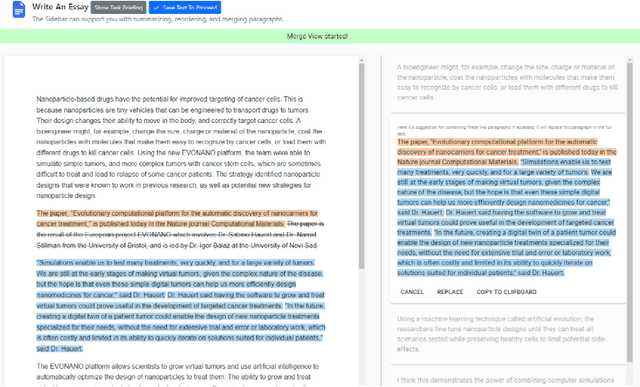
Abstract:We propose a text editor to help users plan, structure and reflect on their writing process. It provides continuously updated paragraph-wise summaries as margin annotations, using automatic text summarization. Summary levels range from full text, to selected (central) sentences, down to a collection of keywords. To understand how users interact with this system during writing, we conducted two user studies (N=4 and N=8) in which people wrote analytic essays about a given topic and article. As a key finding, the summaries gave users an external perspective on their writing and helped them to revise the content and scope of their drafted paragraphs. People further used the tool to quickly gain an overview of the text and developed strategies to integrate insights from the automated summaries. More broadly, this work explores and highlights the value of designing AI tools for writers, with Natural Language Processing (NLP) capabilities that go beyond direct text generation and correction.
 Add to Chrome
Add to Chrome Add to Firefox
Add to Firefox Add to Edge
Add to Edge